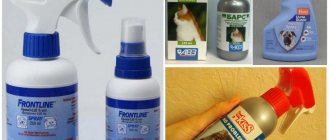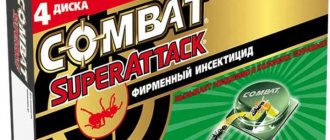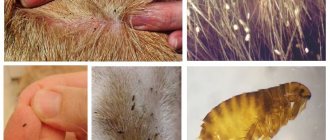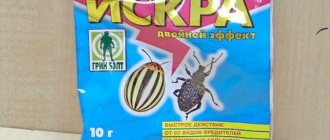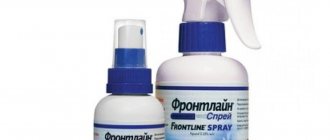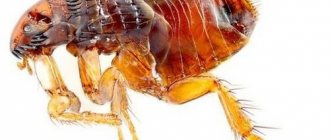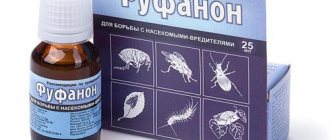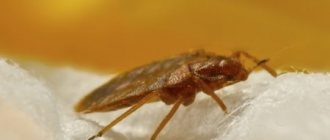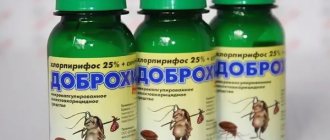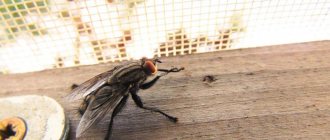Antiparasitic drugs protect pets from fleas and ticks, dangerous diseases and eliminate itchy skin. Every time a cat leaves the apartment, it encounters various insects. Check your pet every time he returns from a walk. Ticks live in grass and trees, and fleas live in environmental conditions - the risk increases.
Frontline flea control is an effective, fast and convenient means of getting rid of blood-sucking insects. This product is produced by the French company Merial, which is known for its unique discoveries in veterinary medicine.
Frontline is an insecticide against fleas and other parasites, which has become a leader at the world level due to its unique properties.
- Types and benefits of the drug
- Operating principle
- Mode of application
- Precautionary measures
- Instructions for use of the drug
- How often can it be used
- How to distinguish from a fake
- Real reviews
Precautionary measures
As mentioned above, the medication is one of the drugs that is low-risk for the body of dogs.
Complies with GOST standard 12.1.007.76 However, when working with Frontline, as with any medicine, precautions should be taken:
Strictly observe the dosage of the drug. Do not use in conjunction with an anti-parasitic collar. Observe age restrictions on the use of the product. Use with caution on weakened and older dogs. Use with caution for pregnant and lactating individuals. If possible, during these periods, avoid any chemical exposure without special indications. Be sure to check with your veterinarian about possible interactions between fipronil and other medications. Before use, you should make sure that the dog does not have an individual intolerance to the components of Frontline.
Instructions for use and precautions
Treatment is carried out outdoors and indoors with open windows or a ventilation system that provides a good flow of fresh air. It differs for different release forms.
Drops are applied to the animal’s withers, after spreading the fur. You need to try to get the liquid directly onto the skin. Sprays are sprayed against hair growth. Tablets are given orally.
When treating, a few drops are instilled directly into the animal's ear. After this, the ear is folded in half and lightly massaged for better penetration of the substance. When applying the composition, it is necessary to avoid getting it into the animal’s mouth or eyes. To do this, before using the spray, moisten the area around the eyes, nose and mouth with clean, cool water. If trouble cannot be avoided, you should rinse off the remaining substance with plenty of water to relieve your pet of the tingling sensation caused by the substances included in the composition.
After the product is applied, the animal is held until the fur dries. This will avoid the transfer of active substances to pieces of furniture. You should also isolate the animal from contact with children for a day. At this time, it is better to refrain from playing with your pet and stroking it.
The maximum effect is achieved one day after application. It is allowed to wash your pet no earlier than 48 hours after the end of the procedure.
If there are several animals in one apartment, it is better to carry out preventive procedures for all on the same day. For prophylaxis, Frontline is used every 4 weeks. If the animal is bathed daily, it is recommended to reduce the time interval between treatments.
If the drug comes into contact with exposed skin of the person carrying out the treatment, the stained area should be washed with plenty of running water. Empty Frontline bottles are strictly prohibited from being reused for storing any substances or for other household purposes. After use, the empty container is tightly closed with a lid, packed in a plastic bag and thrown into the trash.
A series of drops Spot It
The Spot On series includes Frontline drops on the withers against fleas and ticks for dogs and cats. The share of fipronil in these drugs is 10%. Packaging according to the weight of animals and the cost are clearly displayed in the table.
| Name | Animal weight in kg | Product volume in ml | Price in rubles |
| Frontline Spot He S | 2-10 | 0.67 | 416-528 |
| Frontline Spot He M | 10-20 | 1.34 | 482- 535 |
| Frontline Spot He L | 20-40 | 2.68 | 522-662 |
| Frontline Spot On XL | 40-60 | 4.02 | 568-883 |
Frontline drops for dogs
Spot Series It, like all products of the French company, is distinguished by colorful packaging, inside of which there is a pipette and instructions for using Frontline drops. The drug is approved for use not only by adult cats and dogs, but also by young cats over 8 weeks old, lactating and pregnant cats. Drops are not recommended for kittens and puppies whose weight has not reached 1 kilogram, sick or weakened animals.
Application technology:
- The procedure is carried out wearing rubber gloves.
- The pipette with drops is removed from the blister. By lightly tapping, the product is redistributed into the expanded part of the pipette, and the edge is broken at the site of the notch.
- While spreading the fur in the area of the withers, you should drip the product. There is no need to rub it into the skin. Within 24-48 hours, fipronil will spread throughout the skin and concentrate in the upper layer of the epidermis.
- After treatment, the pet should not be subjected to water procedures for 2 days and should not be allowed to come into contact with children or other animals.
- Used pipettes must be disposed of.
A single treatment ensures the destruction of all fleas within 24 hours, protection of dogs from ticks for 5 weeks, from fleas for 12 weeks. In cats, the protective effect is somewhat shorter and is 4 weeks against ticks and 6 weeks against fleas. Drops are also used to treat otodectosis. From 4 to 6 drops are instilled into each ear, the remaining product in the pipette is applied to the withers.
Important!
If several pets live in an apartment, house, or enclosure, they are treated on the same day. To avoid re-infestation with fleas, bedding and pet accessories should be treated with insecticides.
Side effects are rare. Most often they are associated either with individual intolerance to the components or with an overdose. If excessive salivation, vomiting, redness or hair loss occurs at the site of application, the product should be washed off. Your veterinarian may recommend antihistamines.
Composition and release form of the drug Frontline
To combat skin parasites of cats, the French corporation Merial SAS created the drug Frontline. The company conducts serious research and has a strong reputation in the market for manufacturers of veterinary drugs.
The drug is available in three dosage forms:
- drops in polyethylene pipette bottles with a volume of 0.5 to 4.02 ml;
- spray in bottles with a sprayer of 100, 250 and 500 ml;
- Chewable tablets (for dogs only)
Table: dosage forms for cats
| Name | Dosage form | Volume, ml | Included | |
| active substance | Excipients | |||
| Frontline Spot On | drops on the withers |
| fipronil |
|
| Frontline Combo | drops on the withers |
|
|
|
| Frontline Spray | spray |
| fipronil |
|
Photo gallery: release forms
Active ingredients of the veterinary drug Frontline:
- Fipronil has a detrimental effect on the central nervous system of parasites, disrupting the movement of nerve impulses. Causes paralysis and subsequent death of insects. Fipronil does not have a systemic effect on the body of a pet, destroying only pests.
- S-methoprene (as part of Frontline Combo) is an analogue of the hormone-regulator of insect growth, causes developmental anomalies at the egg and larval stages, prevents the appearance of adult individuals on animals and in places where they are kept.
Additionally, Frontline contains excipients:
- in the spray - isopropanol, copolyvidone, purified water, polysorbate;
- in drops on the withers - butylated hydroxyanisole, butylhydrotoluene, diethylene glycol, polyvidone, polysorbate.
The content of the active substance in any form ensures effective destruction of parasites.
Frontline Combo
Insecticide for pets Frontline Combo
Available in the form of drops. Instructions for use are similar to Frontline Tri-Act. The mechanism of action is somewhat different.
The active component is a modern insecticide - fipronil. It has a wide spectrum of action and low toxicity. When used correctly, it does not cause side effects. The effect of the insecticide is complemented by a parasite population regulator. The substance, entering the body of a flea, disrupts the process of reproduction and egg laying.
The effectiveness of drops against fleas for dogs lasts about 2 months, for ticks – 1. Repeated treatment should be carried out after the end of the effect of the product after the previous application.
Frontline is produced in 3 versions for dogs with different body weights, one each for cats and ferrets. One pipette is enough to fully treat your pet. The dosage is determined in advance.
Directions for use and dosage
Sprays and drops on the withers are applied only externally, to the skin. The skin of the animal being processed must meet the following requirements:
It should be dry.
It is highly desirable that the skin be clean. The purer it is, the more evenly the medicine will be distributed throughout it, and the more pronounced its effect will be. Veterinarians advise washing your pet before treatment. The use of shampoos with an antiparasitic effect is not prohibited, but before doing so, you should consult a veterinarian (to avoid drug incompatibility).
It cannot have cuts, scratches, areas of inflammation or other types of erosion. Otherwise, the risk of poisoning increases sharply (the pure drug should not end up in the general circulation).
If there is a rash or signs of dermatitis on the skin, or there are other symptoms of allergic pathologies, the use of the drug should also be postponed “until better times.”
The spray is somewhat easier to use: it is used to evenly irrigate the pet’s fur on all parts of its body. True, after this the cat will need to be occupied with something for about an hour so that she does not have time for licking.
In the case when chewable tablets are used, the cat should not have pathologies of the digestive system, that is, constipation or diarrhea. In addition, it is highly undesirable to treat animals (regardless of the dosage form used) suffering from acute or chronic liver and kidney diseases.
Application of drops/spray
In such cases, the medicine is applied to the withers, between the shoulder blades. The fur needs to be parted (we remind you that it must be clean), after which the required volume of the drug is applied to the exposed skin.
When treating ear mites, everything is somewhat more complicated:
It is necessary to clean the ear canals from deposits of mite waste products. To do this, you can use either 3% hydrogen peroxide or sterile vegetable oil (you can make it yourself by “calcining” the oil in a water bath). Regular cotton swabs are ideal for this purpose. You need to clean your ears carefully, being careful not to damage the ear canal or eardrum.
After this, you need to drop a couple of drops of medicine into each ear canal. Plug the ear canal for about a minute with a finger, while lightly massaging the skin at the base of the ear. These actions help the medicine to be distributed more evenly, which significantly increases the effectiveness of treatment.
For treating cats, we recommend using only 0.5 ml pipettes. In this case, the dosage is extremely simple: one dispenser per animal.
Use of chewable tablets
With them everything is much simpler: the drug is given once, orally, always with food.
But! Considering the variety of packaging, release forms and concentrations of the active substance, we can give only one piece of advice: carefully read the instructions for use included with the medicine by the manufacturer! With tablets, everything is much simpler: the medicine is given at the rate of 2.5 mg of active substance per kilogram of live weight.
Overview of the features of the Frontline action
Frontline refers to products used to eliminate and prevent the appearance of ectoparasites in cats and dogs. The drug has a superficial effect. After use, the components of the drug do not enter the blood, but are distributed over the surface and accumulate in the sebaceous glands. From these, the drug is gradually applied to the skin in the amount necessary to destroy parasites. Thus, after a single treatment, the effect of the drug remains for a fairly long period.
Fleas on a cat
Frontline destroys the following types of skin parasites:
- fleas;
- ixodid ticks;
- cheilitels;
- otodexodes;
- lice eaters;
- lice.
Life cycle of a dog flea
Frontline is produced in several forms, allowing you to choose the one that will be convenient to use for the animal owner.
Frontline composition
The main substance that provides the insecticidal effect of the drug is fipronil. In addition, in various forms of release, Frontline can be supplemented with several substances to enhance effectiveness. Among them:
- butylated hydroxyanisole;
- ethanol;
- butylated hydroxytoluene;
- excipient.
Chemical formula of finpronil
Pharmacology
Fipronil, which is the basis of the drug, affects insect receptors, disrupting the movement of impulses. This causes paralysis and subsequent death of the arthropods.
Frontline is active against almost all common skin parasites of animals. Accumulating in the hair follicles, epidermis and sebaceous glands, fipronil enters the animal’s skin along with the secretion. The effect occurs after 24-48 hours. During this time, the parasites present on the animal die, and the drug is completely absorbed into the skin. The protective properties last for a period of 15 to 45 days. The duration of exposure largely depends on the size of the animal, characteristics of care and accommodation.
The structure of a dog's skin
Contraindications and side effects
After the studies, no obvious side effects or contraindications to the use of the drug were identified. The manufacturer recommends refraining from treating kittens weighing up to 1 kg with the universal product to avoid overdose. If there is a need to process them, it is better to use Frontline, created for small animals. The concentration of the active substance in such preparations is significantly lower than in products for adults. They have a gentle effect on the still fragile body.
Treatment of a kitten with Frontline, created for small animals
It is also recommended to avoid using the product on animals with damaged skin. Multiple wounds can lead to penetration of the active substance into the blood. This will not cause any negative effects on your pet, but may cause minor short-term deterioration in well-being.
Range of flea products
The line of antiparasitic drugs is represented by a series of drops for external use and sprays. Any Frontline flea remedy, regardless of the release form, contains the active substance fipronil, an insecticide that blocks the functioning of the nervous system of fleas, resulting in paralysis and subsequent death of the parasite.
Frontline drugs
Along with preparations for external use, the company produces chewable tablets whose active ingredient is afoxolaner.
You can purchase French insecticidal products in specialized pet stores, veterinary pharmacies, and online stores.
On a note!
Due to the relatively high cost of drugs, counterfeits are widespread. You can distinguish original Frontline flea drops by the presence of a logo on the pipette. Sprays are available with labels in 4 languages. It is also worth paying attention to the appearance of the packaging and bottle. If there are deformations or a crooked label, you should doubt the authenticity of the product.
Contraindications
The drug Frontline is not toxic to cats, so the list of contraindications for using the drug consists of only two points:
- Individual intolerance to the drug in animals;
- The age of the kitten is 1 day after birth.
Possible side effects:
Hypersalivation.
Important!
If side effects occur, you should immediately stop using Frontline and wash it off your pet's fur. In case of severe allergic reactions, it is necessary to consult a veterinary doctor for help and administer anti-allergy drugs.
In addition, when choosing a particular product, it is important to pay attention to what age or weight of the animal it is intended for. The product range of this manufacturer allows you to select suitable drugs for both adults and kittens. This is especially convenient for those owners who have not one cat, but several pets of different ages.
This is especially convenient for those owners who have not one cat, but several pets of different ages.
In the range of the series you can find:
By the way, Frontline drops and sprays intended for cats can also be used for ferrets, which are increasingly found as pets. What are the specific features of certain Frontline tools?
Product line
The company presents a fairly wide range of products in various categories. Manufactured medications are classified by purpose, dosage and effect. As for flea products, the brand is represented by the following range of drugs:
Advertising:
- "Frontline Tri-Act";
- "Frontline NexGar" and "Nexander Spectrum";
- "Frontline Combo";
- "Frontline Spot On";
- Frontline Spray.
All these drugs effectively fight parasites and protect your pet from repeated infections.
Frontline Spray flea and tick spray for dogs and cats
Considering that this product can be used on cats and dogs of different ages and weights, it is necessary to study the attached instructions in detail. It describes in detail how many clicks need to be made to spray the body of an animal that has a specific size, weight, and coat length. Despite the comparative safety of this insecticide, it is still a poison, which means you should not overdo it when spraying your pet with it.
Frontline insecticidal sprays are sold in bottles of 100 and 250 ml. For cats, given their smaller size compared to large dog breeds, it is more advisable to buy the first option. At the same time, if you need to regularly treat a large number of cats and kittens, you can buy a 250 ml bottle.
There are some precautions to using the spray. So, it is advisable to apply the product to animal fur outdoors. In the case of cats that are not allowed outside, this can be problematic. In such situations, the spray should be used in a well-ventilated area, preferably on a balcony, veranda, etc. It is better not to spray the spray on the animal’s face, because it can get into the eyes and mucous membranes of the mouth and nose.
Owner reviews
Bonnie-Blue: “Frontline drops were recommended to me by both the vets and a volunteer friend who helps homeless animals. I treated my cat with them for several years and was satisfied. But last year I also got a dachshund. The drops don't help her at all. Moreover, allergies popped up. I took the drug at the clinic, so counterfeits are excluded.”
CHOYU: “My two dogs spend the summer at the dacha, where there is a sea of ticks. I give them Spectra and no problems: insects only allow themselves to crawl on animals.”
Katushka: “We came out of town for the weekend. While combing, I discovered fleas on my Spitz dogs. The choice of medication has become a problem because... I had a recently whelped female with two-week-old kittens. I decided that it was better to use Frontline Spray. It smells unpleasant, but the fleas disappeared on the third day. And all the pets, including babies, underwent the procedure without any problems.”
Frontline Nexgard chewable tablets for dogs
There are situations when it is very inconvenient or even contraindicated to use external means to combat the parasite. For example, there are wounds on the dog’s skin or you bathe him often and therefore the drops are not effective. Frontline Nexgard chewable tablets will come to your aid.
You will immediately cope with two tasks: firstly, get rid of external parasites; Secondly, the tablets act on worms inside the animal.
Nexgard chewable tablets for fleas, ticks and worms contain the active ingredient afoxolaner. The medicine tastes like beef stew, so dogs eat it with pleasure.
The effect of the medication begins within half an hour after administration. Complete destruction of parasites occurs within 6-48 hours.
It is very convenient that you only need to use the tablets once a month.
Instructions for use
The manufacturer took care not to calculate the dosage of the drug. You just need to weigh your pet and buy the necessary box. There are 4 types of tablets, depending on the weight of the animal: from 2 to 50 kg. Per 1 kg of animal weight, 2.5 mg of afoxolaner is required.
Give the medication separately or with food. Do not break the tablets or they will no longer be effective. The medicine is contraindicated in dogs weighing up to 2 kg or under 2 months of age. Give medication to pregnant and lactating females only with the consent of the veterinarian.
Frontline is an effective insect repellent for dogs. When choosing a form of medication, rely not only on ease of use, but also on existing contraindications, the age of the animal and the degree of infection.
There is also a separate form of Frontline for cats.
Indications for use
According to the instructions, Frontline for cats is used for preventive and therapeutic purposes. It helps get rid of many parasites and prevent infection by them. The use of drops and spray is justified for the following problems:
- Fleas;
- Ticks;
- lice eaters;
- Cheylitelas;
- Otodexodes;
- Lice.
For the treatment of otodectosis, only Frontline Spot On is acceptable.
How often can it be used
The active substance remains in the skin for several weeks. This determines the period of acaricidal and insecticidal action. Frontline protects against fleas for two months, and against ixodid ticks for one month. The frequency of use of Frontline may depend on the season. In the spring and summer, when tick activity peaks, the treatment is repeated monthly. In cold weather, it is enough to treat the animal once every seven to eight weeks.
Recommendations
There is no need to bathe the animal 2 days before and 2 days after treatment. Until the fur is completely dry, you need to make sure that the animal does not lick the drug. Also, do not allow it near heating devices or open fire. Young children should be excluded from contact with the animal for 24 hours. During this time you cannot pet him. To avoid re-infestation and prevent fleas from breeding, the bedding should be replaced. In addition, the following rules must be observed:
- after applying the spray, you should wash your hands with soap;
- when applying the product, do not eat, drink or smoke;
- the drug should be stored out of the reach of children.
High effectiveness of the drug is achieved by following the recommended regimen of its use. When using the product, you should not use other insectoacaricidal drugs.
Updated generation of insecticides
New generation drugs include Frontline Nexgard and Nexander Spectra. The first effectively fights blood-sucking parasites, and the second cleanses the body of helminths.
These two products are produced in the form of tablets, but not ordinary ones, but chewable ones, with a pleasant smell and taste.
Benefits of the insecticide:
- ideal for animals that require frequent bathing and shampooing;
- used for pets with skin diseases;
- can be mixed into food or given separately;
- thirty minutes is the time during which the tablet completely dissolves;
- as soon as the medicine takes effect, you can safely contact your pet and let him near other puppies and children;
- One dose of medication is enough to cleanse the dog’s body of parasites;
There are four dosage options for the drug:
- for animals weighing 2-4 kilograms, the dose is 11.3 milligrams;
- 4.1-10 kilograms – 28.3 milligrams;
- 10.1-25 kilograms – 68 milligrams;
- 25.1-50 kilograms – 136 milligrams.
If your pet's weight exceeds 50 kilograms, you can calculate the dose yourself: 2.5 milligrams per kilogram of weight.
The drug is contraindicated for puppies less than two months old or weighing less than 2 kilograms.
Frontline anti-tick tablets can be given to pregnant and lactating animals without restrictions.
Contraindications and side effects
Frontline is extremely toxic to rabbits. It is not allowed to use the product on kittens under 8 weeks of age and babies weighing less than 1 kg. The drug should not be used for pets who are weakened after serious illnesses, or if there are lesions on the cat’s skin.
The use of Frontline is not recommended for:
- individual intolerance to the components of the product;
- hypersensitivity to the components of the drug;
- allergic reactions.
Side effects from using Frontline medicines are rare. The animal's skin in the area where the drops are applied may temporarily become discolored or red, hair may fall out, or itching may occur. Allergic reactions can be eliminated by bathing the cat with shampoo and giving antihistamines.
Reviews, pros and cons
For clarity, here are a few negative reviews
about the insectoacaricide "Frontline":
Review #1:
“I stopped buying Frontline for my dog because this drug only partially kills fleas. A small colony still remains on the body, causing discomfort to my pet. If you choose such drops, then you should also wear a flea collar.”
Review No. 2:
“I bought Frontline spray on the advice of a veterinarian.” What can I say, I was unpleasantly surprised by the price (I paid 1000 rubles for a 100 ml jar). The smell of the spray was also surprising, pungent and unpleasant. I barely sprayed my dachshund with ticks, but he kept trying to break free and run away.”
Review #3:
“I do not recommend buying Frontline if there are a lot of ticks in your area. My Matilda caught babesiosis after being treated with this product. But Frontline really saves you from fleas. If the dog is an indoor dog, then this remedy is suitable.”
But it is worth noting that for the most part, reviews of Frontline are still positive. And veterinarians have long earned the trust of this brand of drugs. So, the advantages of Frontline insectoacaricides include
:
- Speed of impact on parasites. For example, Frontline Tri-Active begins to act within 5 minutes after application;
- No side effects after use. Allergic reactions to Frontline products occur only occasionally if the animal is intolerant to any component of the composition;
- With the help of a spray you can rid and protect newborn dogs from parasites;
- "Frontline" is approved for lactating and pregnant bitches;
- The manufacturer took care of the ease of use of its products by releasing drops, tablets, and spray;
- "Frontline" is a therapeutic and prophylactic drug at the same time.
The following are grateful reviews from buyers of Frontline products.
:
Review #1:
“I’ve been buying Frontline for about 10 years now. I used to choose drops, but now I’ve switched to a spray. Very convenient, fast and effective, although not cheap. But the most important thing is that the drug is safe for dogs, does not cause vomiting, weakness, or refusal to eat.”
Review #2:
“What I really like about Frontline drops is their efficiency. In the evening I drop it on the dog’s neck, and in the morning the fleas are dead or half-dead, the animal stops itching. Before purchasing, I recommend asking the seller for documents for the veterinary drug so as not to pay for a counterfeit.”
Review #3:
“I’ve been buying Frontline for four years now.” The drops act quickly, are non-toxic, protect the dog for a long time, and the high price is due to the quality. You just need to remember that drops are a means of protection, not a panacea for fleas and ticks. Therefore, I still regularly examine the dog’s body for the presence of parasites. But in almost four years of use, the drops have never failed.”
special instructions
If there is increased individual sensitivity to the components of the drug and signs of allergic reactions appear, the treatment is stopped, the drug is washed off with water, and antihistamines are given orally. + When working with Frontline Combo, you should follow the rules of personal hygiene and safety precautions provided for working with medicinal products for animals. While working with the medicine, you are not allowed to drink, smoke, or eat. If Frontline Combo accidentally gets on the skin or mucous membranes, it should be washed off with a stream of water. After finishing work, wash your hands with warm water and soap. Empty drug pipettes must not be used for household purposes; they must be disposed of with household waste.
Release form:
FAQ
Can it be used by animals during pregnancy or lactation?
According to the results of numerous international tests, experts have not identified any negative effects on this category of pets. Frontline is the only insecticidal and acaricidal drug whose use is permitted during these periods. In order to treat kittens under 2 months old, the company produces it in the form of a spray.
Is it dangerous if a pet licks its fur after treatment with Frontline?
No. The drug is not dangerous to life and will not cause harm to the body, however, if it gets inside the body, it can cause excessive salivation, so to avoid this situation, you need to apply the product to those places where the cat cannot lick it off.
Experts advise using the drug to treat cats every 2 months, during periods of danger of infection. If there is a danger of ticks, then the procedure must be repeated every month no more than once.
Does Frontline repel or prevent tick bites?
No. The medicine does not affect the bite. It prevents the transmission of diseases from ticks to pets. The fact is that a tick needs from 48 to 72 hours to infect an animal - this is the time for transmission of infection. During this time, Frontline neutralizes the impact of the tick on the body.
The cat got wet or dirty after using the product, can it be washed?
Yes. The medicine is resistant to an aqueous environment, however, it should be left for 48 hours until the drug is absorbed into the skin. If the pet is washed more than 2 times a month, then treatment should be carried out more often.
Is there a need to take funds in parallel with Frontline?
A medicinal insectoacaricidal preparation in the form of a solution for external use, containing fipronil - 9.8% and S-methoprene - 8.8% as active ingredients, and polyvidone and polysorbate as excipients.
Indications for use
Used to combat fleas, lice, lice and ticks (ixodidae, cheylitella) of cats by topical (Spot On) application to the skin.
Dosage and method of administration
Frontline Combo is used to combat fleas, lice, lice and ticks (ixodidae, cheylitella) in cats by topical (Spot On) application to the skin. Before treatment, break off the tip of the pipette, spread the animal’s fur in the back area (between the shoulder blades) and, pressing the pipette, apply the drug to the skin at one or several points. The protective effect of the drug against ixodid ticks in cats lasts up to 3 weeks, against the imago and preimaginal phases of insect development up to 6 weeks. If the animal is severely affected by lice, fleas, lice, it is recommended to treat once a month. If the animal is washed more than 2 times per month, it is recommended to reduce the interval between treatments to 3 weeks. It is not recommended to wash animals within 48 hours after treatment with Frontline Combo, or to use other insectoacaricidal agents.
Side effects
In terms of the degree of impact on the body, Frontline Combo is a low-hazard substance (hazard class 4 according to GOST 12.1.007.76), in recommended doses, it does not have a skin-resorptive, sensitizing, embryotoxic, teratogenic or mutagenic effect. In case of contact with eyes, it causes mild irritation.
Contraindications
Increased individual sensitivity to the components of the drug. Sick and convalescent animals, as well as kittens under 8 weeks of age, cannot be treated.
Types and benefits of the drug
Drugs from the Frontline series are selected depending on various factors: age, weight and general health are taken into account.
The company produces flea medications in the following forms:
- nexgard - tasty chewable tablets for dogs;
- oil drops;
- aerosol sprays;
- solutions.
Antiparasitic products produced in France can be purchased at:
- stores where animals are sold;
- online stores;
- clinics;
- veterinary pharmacies.
Frontline tablets for controlling fleas and ticks in dogs are a product that poisons ectoparasites at the molecular level. Afoxolaner (the active ingredient) enters the dog's circulatory system. If the parasite bites an animal, it receives a poisonous dose of the substance and dies.
To treat cats and dogs against fleas, drops (Spot On and Combo) and spray are used. Spot drops act only on the animal, starting the process of migration of blood-sucking parasites from the fur. Sometimes flea pupae (nymphs) survive, so a second treatment after 8 weeks is appropriate to avoid re-infestation.
For kittens up to 8 weeks and pets that do not tolerate contact with various chemicals, Merial offers flea spray from the Front Line series.
Drops are able to penetrate into the deepest layers of the skin, providing complete protection. The spray acts superficially and is distributed only over the coat.
Spot series It is often used for pets from 8 weeks and females during the period of bearing cubs and feeding. If the animal weighs less than 1 kg, do not rush to treat it with this product, it is better to consult a veterinarian.
Flea medications are available in solutions according to weight category, indicating the permissible dosage (10, 20, 40 and 60 kg). After treatment, the animal cannot be bathed or let out for a walk; contact with children must be limited.
Flea spray is typically used for smooth-coated breeds, babies under eight weeks of age and weighing less than 2 kg, and for pets with severe allergic reactions to the drops.
The manufacturer warns that Frontline is highly toxic when wet.
Frontline Combo is an enhanced product that can kill even nits and nymphs. Available in the form of a pipette with dosed pressure - 1.5 ml of active substance in one pressure.
The drug will relieve itching after flea or tick bites, prevent flea dermatitis, and also prevent infection of the apartment. The drops are capable of killing most types of ticks. Combo is a moisture-resistant product, so your pet can be bathed 48 hours after treatment.
Are Frontline drugs safe?
- If the doses and rules of use are followed according to the instructions, the drug Frontline can rarely cause a negative reaction in the cat’s body, except in cases of individual intolerance to the components of the product in animals.
- However, when using the spray, the animal may experience short-term shortness of breath due to the large amount of liquid entering the animal's lungs.
- A double dose of the product, which the pet owner can use to enhance effectiveness, can harm the cat. The active component fipronil, in overdose, can cause tremors, convulsions and ataxia.
- If a kitten is treated with a single dose, there is a risk of developing intoxication.
- To prevent the drug from getting inside, it is recommended to put a protective collar on the animal, at least for a few hours.
Answers to popular questions
Many cat owners are interested in questions related to the nuances of using Frontline
Since the cat is a member of the family, and the health of the pet is under the close attention of the owners, they are looking for answers to their questions related to the treatment of the cat’s skin and further actions
Is it possible to scratch after treatment?
After treatment, touching the cat is not allowed. The procedure must be carried out with rubber gloves to prevent contact of the substance with your hands. The drug is applied to the clean skin of the cat, from where, due to its accumulative properties, it is gradually absorbed into the sebaceous glands, mixed with skin secretions and acts on parasites, causing their death. If you scratch your cat after applying the drug, microcracks may form, through which the product will enter the bloodstream and cause a negative reaction.
Can it be used on a dog?
It is perfectly acceptable to use Frontline on a dog. The manufacturer produces a separate type of drug in the form of a spray and drops, intended for treating dogs. The amount of medication used depends on the dog's weight.
Is it possible to divide by less?
When separating the contents of the pipette, there is a risk of violating the dosage of the active component and the alcohol-containing element, which will lead to the ineffectiveness of the medicine.
Is it okay for pregnant cats?
The drug Frontline has been tested in clinical conditions and is considered an absolutely safe treatment for cats during pregnancy.
Is it possible to put drops in the ear?
You can put Frontline drops into your ear if you are infected with ear mites. The procedure must be performed by a veterinarian in a clinic setting. The ears must be clean so that no dirt remains deep in the ear.
To treat ear mites, a spray is also used, which is sprayed into the auricle after preliminary cleaning.
Is it possible to pet a cat?
Touching a treated cat is prohibited, especially for children and people prone to allergies. The cat should not be petted until the area where the drug is applied is completely dry (about 24 hours). It is not allowed to take a treated animal into bed.
Is it possible to wash a cat?
Bathing with (or without) shampoo 1 hour before treatment does not affect the effectiveness of the drug, provided that the pet’s fur and skin are completely dry. Washing or bathing the cat is allowed 48 hours after treatment.
How to distinguish from a fake
Since the drug Frontline is a popular remedy and is often recommended by veterinarians, fakes are sometimes found in pet pharmacies. To protect yourself from a useless purchase, it is worth knowing the distinctive features of the original. These include:
- A plastic container with drops is always packed in a sealed cardboard package;
- The Frontline logo is printed directly onto the dropper itself;
- The company name is printed on the packaging;
- The batch number and production date are duplicated on the applicator and cardboard base;
- Each copy is accompanied by a leaflet with detailed instructions for use;
- There are no additional holograms or stickers on the packaging;
- For Frontline spray and drops, the composition, concentration, and volume of the drug are indicated;
These external signs are classic. Merial periodically changes some design elements. The color of the packaging or the photo of the cat may change. Some blisters are marked “PCT”, which replaces the Soviet quality mark and means that the product meets the requirements of GOST certification.
Instructions for use
Processing the animal takes no more than half an hour
. Before using it, it is recommended that you read the instructions for use included with each package. If drops are chosen for treatment, you must carefully cut off the tip of the plastic pipette. The fur between the cat's shoulder blades is parted with your hands, and the oily liquid is applied to the skin in a thin strip. The drug is quickly absorbed, no need to rub it in. It is forbidden to wash the cat 2 days before the procedure and for several days after it. Any moisture in your pet's fur is undesirable; it must be protected from rain or dew. If there are several cats living in the house, you will have to limit their contacts to avoid mutual licking. Children should not pet their pet for 3-4 days after treatment.
Vaccination schedule for kittens
Frontline Combo in the form of drops can be used to treat otodectosis. First, the auricle is thoroughly cleaned of brown crusts using cotton swabs and a special non-greasy lotion. Then 5-6 drops of the drug are carefully poured into the ear. The cat needs to be held tightly to prevent it from shaking its head.
The auricle is folded and gently massaged until the product is completely absorbed. In case of severe infection, the treatment is repeated after 4-5 days.
Frontline spray is suitable for treating kittens and smooth-haired cats. The procedure is best done outdoors. Before work, the cat's ears, eyes and nose are moistened with water, and the fur is combed with a brush or comb. The bottle is shaken and sprayed, kept at a distance of 15 cm from the animal. The product is evenly distributed throughout the body, including paws, tail, head, stomach
It is important to ensure that the drug does not get into the eyes and mouth of the animal. For 1 kg of cat's weight you will need 2-4 presses on the pump of a 250 ml bottle
There is no need to rub in the spray; the drug begins to act immediately after absorption. If necessary, the cat can be bathed the very next day after spraying with the spray. If several animals live in the house, simultaneous treatment must be carried out. It is recommended to spray the cat's bedding or her favorite chair with the product. This procedure is guaranteed to protect against ticks and prevent secondary infection.
Applications of the drug
Frontline SpotOn drops and Frontline Combo drops are used through topical application to the skin of the animal.
The tip of the pipette must be broken off, then part the pet's hair in the area between the shoulder blades, and carefully apply the drug to the skin area. In addition, Frontline SpotOn drops are used to treat ear scabies by placing a few drops into the ear in accordance with the treatment regimen prescribed by a veterinarian.
Frontline SpotOn drops and Frontline Combo drops are used by topical application to the skin of the animal.
"Frontline spray" is used by spraying the drug onto the skin. All animals should be processed exclusively outdoors or in a ventilated area. Immediately before use, the bottle must be shaken thoroughly and, by pressing the sprayer, apply the drug to the body of the pet in the direction against the main hair growth.
Flea spray is used to treat the entire body of the animal. The drug is applied at a rate of about five milliliters per kilogram of animal weight. Frontline spray is conveniently dosed and each press when using a 100 milliliter bottle corresponds to a dose of 0.5 milliliters, and pressing the spray head of a 250 milliliter bottle corresponds to a dose of 1.5 milliliters.
Re-processing is performed according to indications. However, you should not use Frontline flea drops more than once every three months.
Preparations from the Frontline series are prohibited for use on kittens younger than two months of age.
